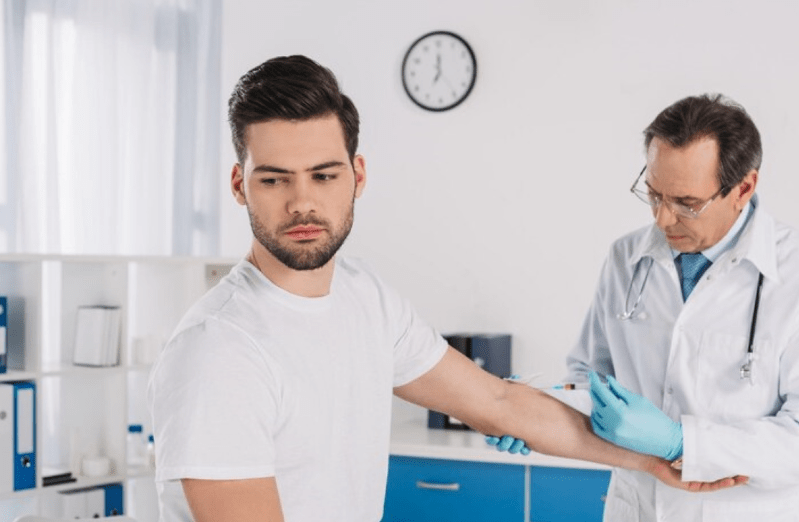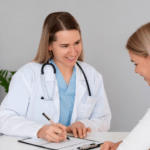Golf is a sport of precision, finesse, and technique, requiring a delicate balance of power and control. However, the repetitive swinging motion involved in golfing can put significant strain on the muscles and tendons of the elbow, leading to a common condition known as golfer’s elbow.
As a golfer’s elbow specialist, I have dedicated my career to diagnosing, treating, and preventing this debilitating condition, helping golfers of all levels get back on the course and swing again with confidence.
Understanding Golfer’s Elbow
Golfer’s elbow, medically known as medial epicondylitis, is a condition characterized by pain and inflammation on the inner side of the elbow, where the tendons of the forearm muscles attach to the bony bump on the inside of the elbow (medial epicondyle).
Despite its name, golfer’s elbow can affect individuals engaged in a variety of activities that involve repetitive wrist and forearm movements, such as golfing, tennis, baseball, and weightlifting. The primary cause of golfer’s elbow is overuse or repetitive stress on the tendons, leading to micro-tears, inflammation, and pain.
Symptoms of golfer’s elbow may include:
From amateur enthusiasts to professional athletes, golfer’s elbow can affect anyone who regularly engages in golfing or similar activities.
– Pain and tenderness on the inner side of the elbow
– Stiffness and limited range of motion in the elbow joint
– Weakness or numbness in the hand or fingers
– Difficulty gripping or lifting objects
– Worsening pain with activities that involve gripping or wrist flexion, such as swinging a golf club
As a golfer’s elbow specialist, I’ve encountered countless individuals whose passion for golf has been hampered by this nagging injury.
Treatment Approaches for Golfer’s Elbow
As a golfer’s elbow specialist, I employ a variety of treatment approaches to help patients overcome their symptoms and regain function in their elbows. These may include:
1. Rest and Activity Modification
In many cases, the first step in treating golfer’s elbow is to rest the affected arm and avoid activities that exacerbate symptoms. I work with patients to identify any repetitive movements or activities that may be contributing to their condition and develop strategies to modify or minimize these behaviors.
2. Physical Therapy
Physical therapy plays a crucial role in the treatment of golfer’s elbow, helping to improve flexibility, strength, and proprioception in the affected arm. I collaborate with skilled physical therapists to design individualized exercise programs that target the muscles and tendons of the forearm, wrist, and elbow, with the goal of reducing pain and improving function.
3. Orthotics and Bracing
Orthotic devices, such as elbow braces or forearm straps, can provide support and stability to the elbow joint, helping to alleviate pain and reduce strain on the tendons. As a golfer’s elbow specialist, I may recommend the use of orthotics or bracing as part of a comprehensive treatment plan for individuals with persistent symptoms.
4. Injections
Corticosteroid injections can be effective in reducing inflammation and pain associated with golfer’s elbow, providing temporary relief for patients who have not responded to conservative treatments.
5. Regenerative Medicine
In recent years, regenerative medicine techniques such as platelet-rich plasma (PRP) therapy have gained popularity as alternative treatments for golfer’s elbow. PRP therapy involves injecting a concentrated solution of platelets derived from the patient’s own blood into the affected area, stimulating tissue repair and accelerating healing.
Surgical Options for Golfer’s Elbow
In cases where conservative treatments fail to provide relief or when there is significant tendon damage, surgical intervention may be necessary to repair the injured tissue and restore function to the elbow.
1. Arthroscopic Debridement
Arthroscopic debridement involves using a small camera (arthroscope) and specialized instruments to remove damaged tissue and debris from the elbow joint, relieving pain and improving range of motion. This minimally invasive procedure can be an effective option for individuals with mild to moderate golfer’s elbow who have not responded to conservative treatments.
2. Tendon Repair
In cases of severe or chronic golfer’s elbow with significant tendon damage, surgical repair may be necessary to restore function to the elbow. As a golfer’s elbow specialist, I perform tendon repair using techniques such as suture anchors or tendon grafts to reattach the torn tendon to the bone and facilitate healing. This may be done through open surgery or arthroscopic techniques, depending on the specific characteristics of the injury.
3. Rehabilitation and Recovery
Rehabilitation programs typically include a combination of physical therapy exercises, manual therapy techniques, and modalities such as heat, ice, and electrical stimulation to promote healing and optimize recovery. I monitor my patients’ progress closely throughout the rehabilitation process, adjusting their treatment plans as needed to ensure a safe and successful return to golfing and other activities.
Conclusion
As a golfer’s elbow specialist, my journey has been defined by a commitment to excellence in patient care and a passion for helping individuals overcome the challenges of golfer’s elbow.
Through a combination of advanced diagnostic techniques, evidence-based treatments, and personalized rehabilitation programs, I strive to empower my patients to regain function in their elbows and return to the sport they love.
By staying at the forefront of medical advancements and maintaining a patient-centered approach, I continue to make a meaningful difference in the lives of golfers of all levels, helping them overcome golfer’s elbow and swing again with confidence.



